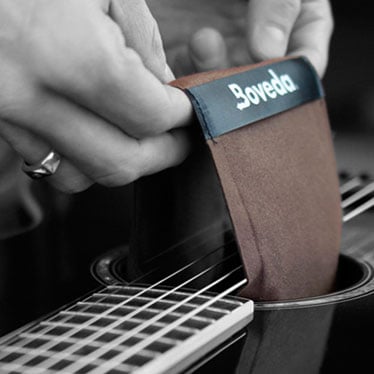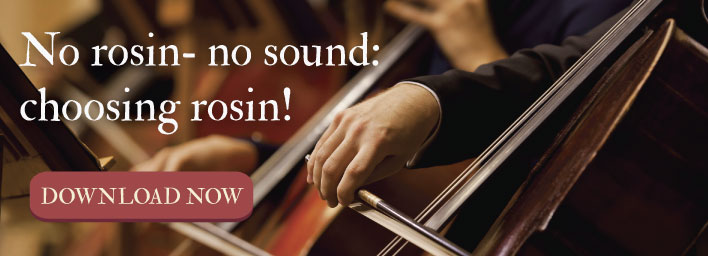Why Humidification Is Important For Your String Instrument

Odds are humidification wasn't top of your instrument essentials as a beginning strings player. However, maintaining consistent and desirable humidity levels in the instrument's case, as well as your living, rehearsal, and performance venues, is optimal for instrument tone and longevity – as well as for minimizing unnecessary repairs and parts replacement.
What's the Connection Between String Instruments and Humidity?
Humidity levels feature in any article pertaining to string instrument care. This is because the large majority of string instruments are made of wood, which is highly susceptible to moisture - including fluctuations in ambient humidity levels.
The ideal humidity level for string instruments is 50%, +/- 10% (coincidentally, that's the ideal humidity level for humans too).
Wood cells expand and contract as humidity levels increase or decrease, respectively - and in addition to affecting the general sound and tone of your instrument, humidity fluctuations can lead to cracking, splitting or warping. At best, you wind up with an instrument that requires expensive repairs and, at worst, damage can be so severe that the instrument is beyond repair altogether.
In addition to the body of your instrument, other parts are susceptible to damage or undesirable effects as the result of undesirable humidity levels as well, including:
- Permanent distortion of the neck and scroll
- Warping, loosening or sticking of the tuning pegs
- Distortion of the bow
- An increase in wood width by as much as 1/8-inch in just a 20% humidity increase
- Swelling or shrinking of the bridge, which affects string position and tuning
- Corrosion of strings (particularly metal types)
Why put your instrument through all that when you can protect it using the right tools and accessories?
Tips on Providing Ideal Humidity Levels for Your Instrument
Fortunately, there are tools and accessories designed specifically to provide relatively precise humidity levels. From whole-home products, to those designed for your instrument case, making the small investment in these or other similar products pays off in reduced repair costs and/or the heartbreak of having to replace a beloved instrument.
Humidity packs by Boveda
Humidity packs, like the ones made by Boveda, are a simple and affordable way to maintain ideal humidity levels in and around your instrument when stored in its case. The packs are specific to desired humidity levels and provide two way humidity control - both adding or removing moisture as required with no maintenance. For most string instruments, you're looking for the humidity percentage closest to 50, which is Boveda's 49% Humidity Packs designed for wood or brass instruments.
Other products such as Dampit releases moisture only and requires maintenance.
Invest in a Hygrometer
Hygrometers are small, portable humidity testers you can use to keep track of humidity levels and adjust humidifying or dehumidifying strategies accordingly.
A hygrometer comes in exceedingly handy for testing all manner of locations, ranging from your instrument's case and rooms in your home, to the closet where instruments live when not in use or the stage of an upcoming performance venue.
The proper holder or mounter for your (de)humidifying device
Depending on how your particular humidifying or dehumidifying product of choice works, you can wind up doing more harm than good. For example, humidifying products that introduce moisture to the instrument can potentially do long-term damage to the interior of the instrument if it lays directly against the wood. Products that wick moisture out of the air can become moist themselves, having a similar effect.
Damage can range from swelling or warping to actual mold and mildew growth - all of which will permanently injure your instrument if you're not careful.
Look into product- and instrument-specific pouches or holders designed to help the packets or inserts do their job with minimal damage to the instrument's body.
Boveda Starter Kits do come with pouches to hold the packets, and will not damage instruments, even if the packets come into contact with the instrument.
Whole-home humidity accessories for HVAC systems
If you own or rent your home, looking to add-on humidity-centric accessories designed for your HVAC system. While the initial investment may be more at the outset, the payoff is continuity in your whole-home humidity levels that are healthier for both your body and your instrument.
Proper Humidification Makes You Sound Better
While the bulk of the information pertaining to instruments and proper humidification focus on the instrument, we'll give you a self-centric, final reason to keep your instrument at the ideal humidity levels: your overall sound.
String instruments sound their best when they're in ideal shape. If your instrument is moisture-logged or dried out, it will "voice" its complaints via undesirable changes in resonance, tone and poor sound quality. As a musician, you always want to sound your best, so a little extra emphasis on humidification will help you accomplish that goal.


